Last updated on December 30th, 2023 at 02:57 pm
There are loads of budget-friendly studio monitors out there, but there are two that seem to be heat-to-heat competing for the first spot, and these are the Kali LP-6 and the Adam T5V studio monitors.
In this article, I will tell you the differences between the two, I will go over their overall sound quality, build quality, connectivity, price, and which one I think you should get, and there is a definite answer to that question.
So, without any further ado, let’s get started!
Differences between the Kali Audio LP-6 and Adam Audio T5V monitors
The main difference between the Kali LP-6 and Adam T5V studio monitors is that the T5V have a ribbon tweeter that goes up to 25kHz, which makes listening to the high-end content easier, and a 5” woofer. Whereas the Kali LP-6 have a 6.5” woofer, a 1” tweeter, and more balanced frequency response overall, making them flatter.
The Adam T5V’s ribbon tweeter design is what made them stand out for so long and it’s why many used to refer to them as the best budget studio monitors, until the Kali LP-6 came along.
The Kali LP-6 are newer, in fact they were first released in 2018, and have made quite the name for themselves in the audio industry, and many, me included, consider them to be a better alternative to the Adam T5v, Yamaha HS5’s, and others.
Let’s take a quick look at both of them, their sound quality, build quality, some specifications, and more.
Kali LP-6
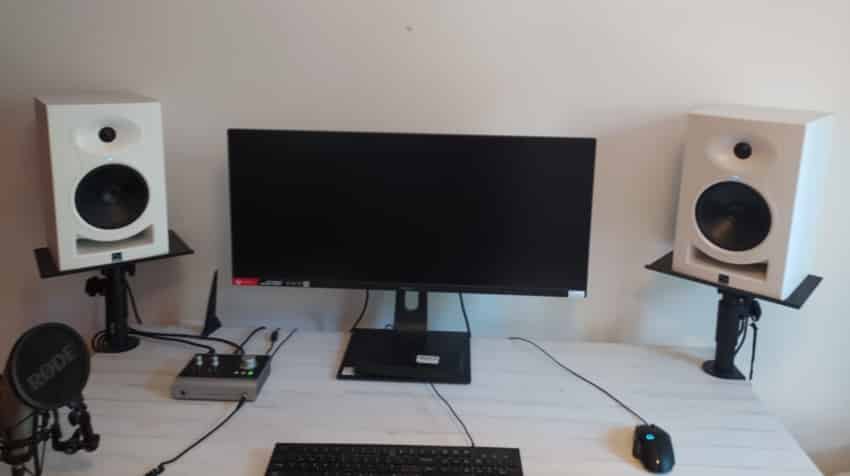
I first got the Kali LP-6 about a year ago and I have to say that I was extremely surprised at their size, since they are much bigger than most other monitors with 6.5” drivers, not to mention 5”-driver monitors, like the Adam T5V.
I got the white ones, because they look much nicer, and set them up on some studio monitor stands.
Quick Note: If possible, always use studio monitor stands. I tried these monitors, as well as many others, by having them set up right on my desk and they sound terrible when compared to how they sound using stands. Just make sure to have the tweeter at ear-height and to point them towards you.
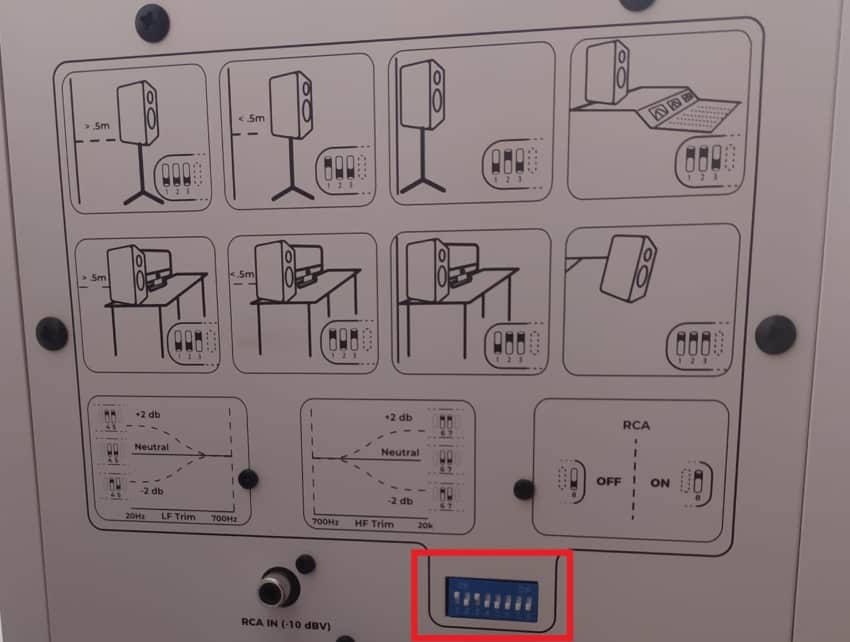
On the back they have a gain control and small EQ switches which allow you to tailor the frequency response to the room, and you can do that by simply following the pictures on the back of the monitors which give you a visual representation of how to adjust those switches depending on where the monitors are positioned.
Build Quality
The Kali LP-6 are definitely built to last: They are extremely solid, heavy, and they seem to be very well put together, so I wouldn’t worry about them breaking on you any time soon unless you treat them poorly.
Connectivity
- 1x XLR.
- 1x TRS.
- 1x RCA.
I am currently using a TRS connection since my Audient iD14 doesn’t come with XLR outputs, but no matter what interface you have, you can definitely connect to the LP-6 without any issues.
Sound Quality
The word I would use to describe the Kali LP-6 is balanced. They don’t have any notorious issues as far as frequency response goes where some may be poking their head out a little too much, which means that they are quite flat-sounding.
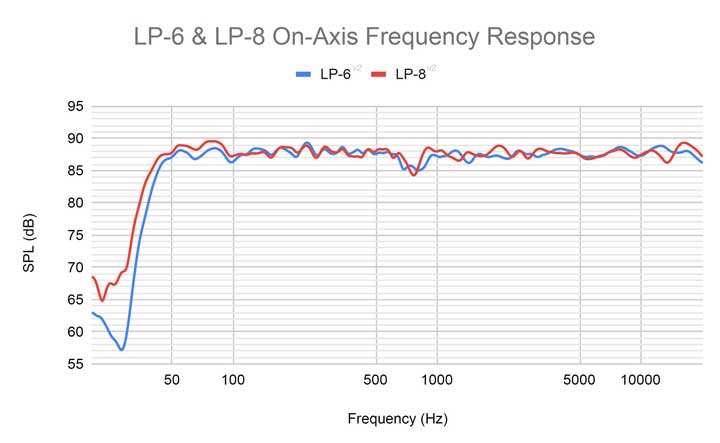
This is something that other monitors don’t do that well, such as the Yamaha HS8, since those tend to have a much more boosted mid-range. Although it’s worth mentioning that that’s on purpose, since the mid-range is a generally problematic area, and having it more emphasized can help you identify problems more quickly.
Generally speaking, sounding balanced, or “flat”, is a very desired quality in studio monitors, and the LP-6 definite have that quality.
I use them for mixing, general music listening, watching movies, etc., and aside from sometimes not being able to listen to the very low end properly in some cases, which might be caused by a lack of proper positioning or some issues with my acoustic treatment, so I wouldn’t blame the monitors on that just yet, I think that they sound absolutely phenomenal.
Price Tag
I’ll just mention this now, but the Kali LP-6 are about 10% more affordable than the Adam T5v, selling at about $200 depending on the retailer, making them an even better choice.
- You can get the Kali LP-6 here: Amazon, Sweetwater.
Both of these monitors are part of my list of the best Studio Monitors under $300 that you should also check out!
Adam T5V
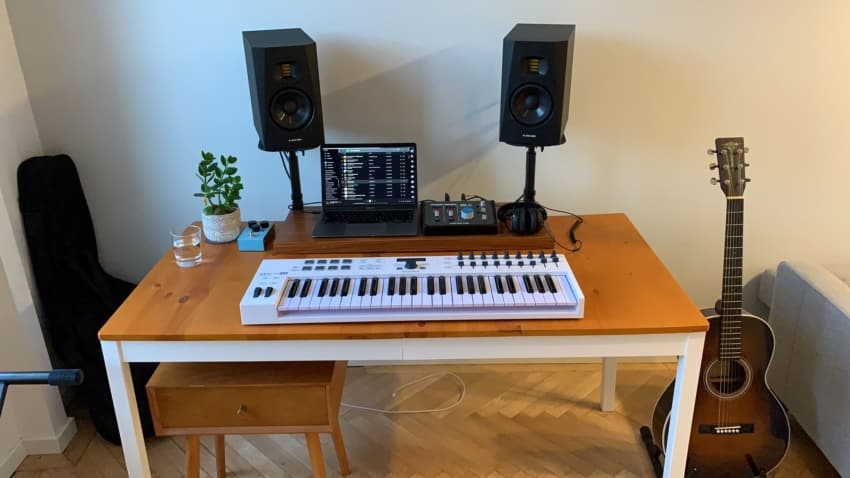
I used the T5V’s a couple times, and while I don’t have as much experience and time invested into them as I do with my Kali LP-6 monitors, I do have a pretty good idea on how they perform.
Now, it’s worth mentioning that they have 5” woofers and that this means that the low end won’t be as prominent, since the larger the driver, the more low-end it can produce.
As far as the tweeter goes, this is where the T5Vs shine, since it’s a ribbon-style tweeter that is excellent at accurately reproducing the high-end, and in this regard, I do have to say that they are better than the Kali monitors, but more on sound quality in a second.
These speakers are quite smaller than the LP-6s, but this es expected since they have smaller woofers. But like I previously mentioned, the Kali monitors are huge for 6.5” speakers.
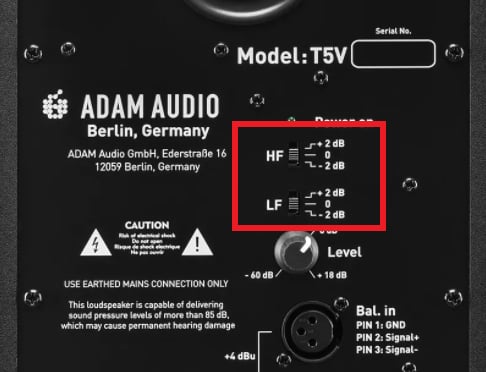
On the back, they also have a gain control, but you don’t get as much EQ control over the sound since they only come with two 3-way switches labeled “LF” and “HF” that boost or cut the monitor’s respective high- and low-frequency responses by 2 dB.
This means that you don’t have as much tone shaping control over the T5V as the LP-6.
Build Quality
The build quality is identical to the one of the Kali LP-6: They are very well put together, are quite heavy (not as heavy as the LP-6s, but they are also smaller), and should absolutely last you a very long time if properly taken care of.
Connectivity
- 1x XLR.
- 1x RCA.
As you can see, these monitors don’t offer a TRS connection, which means that you will either have to connect them XLR to XLR, if your audio interface has XLR outputs, or use a TRS to XLR cable.
Sound Quality
As far as the high end goes, the T5V sound phenomenal and it’s definitely where they excel at.
However, the lower end is a bit lacking and all of this makes it so that they don’t sound as balanced, or as flat, as the Kali ones.
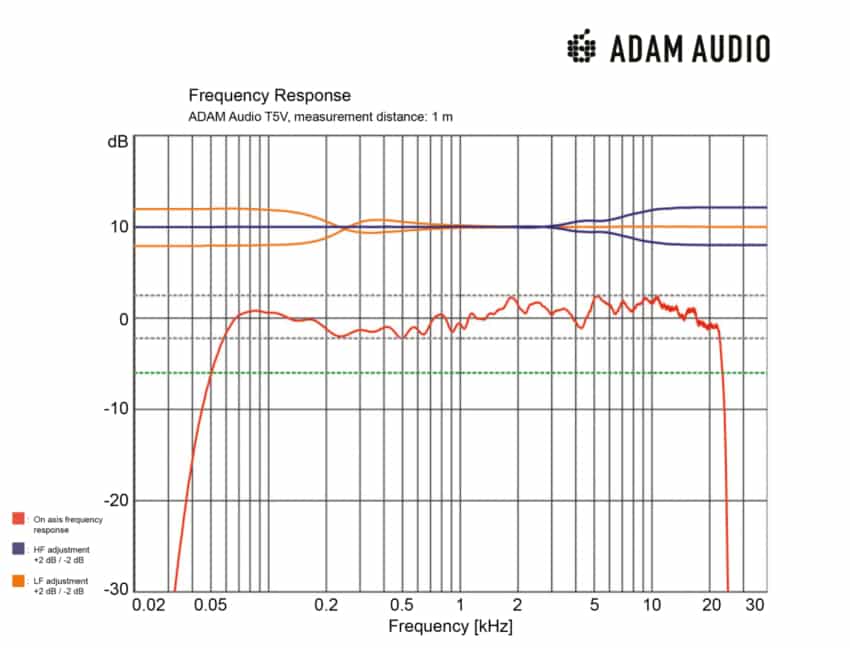
They still sound great and work really well for mixing and general music listening though.
Price Tag
The Adam T5V are a bit pricier than the Kali LP-6, about 10% more expensive, and you should be able to get them for about $220 depending on where you buy.
- You can get the Adam T5V here: Amazon, Sweetwater.
Overall Impressions & recommendation
Even though the Adam T5V are extremely good budget-friendly studio monitors, I don’t think that they are able to beat the Kali PL-6 in almost any way. The only thing that makes them stand out is the tweeter which really does sound great, but they are worse in every other way, and are even more expensive.
If you ask me, I’d go with the Kali LP-6 any day of the week without hesitation.
I hope this information was useful!
Have a great day!
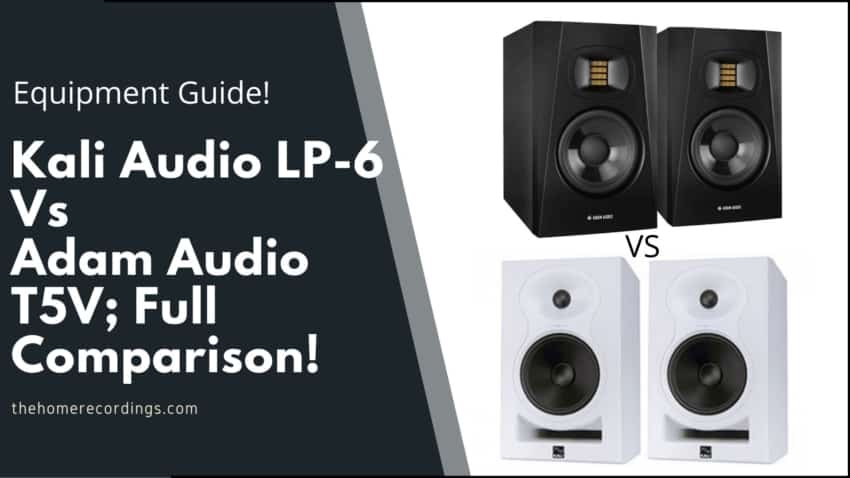
How does the Kali fare against the Adam T7V? Seems like a more fair comparison to pick a model with similar woofer size…